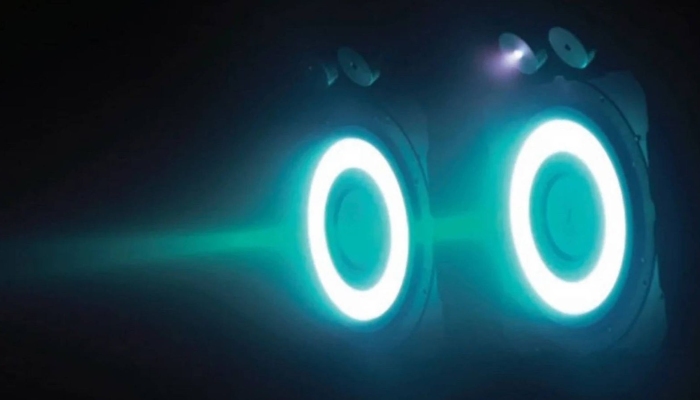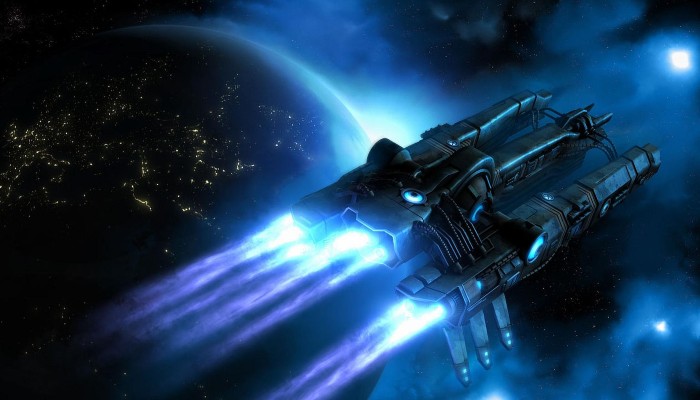China develops an engine to travel in record time to Mars and Neptune
The news of the last few weeks in the Chinese media, which was later deleted, revealed that the “mini nuclear reactor” with which they were working is ready. In short, the engine to travel to Mars and Neptune could already be operational.

In the last days, different media assured that the reactor passed a great evaluation of performance . This test was organized by the Ministry of Science and Technology of the Asian country.
Curiously, the news was deleted, but theorists assured that this is proof that the Engine to travel to space in record time is ready.
The Chinese “super” engine to travel to space is ready
The news did not detail the exact use China wants to put to the reactor. However, these nuclear propulsion systems are the same ones that other countries have studied to bypass the limitations of solar panels and chemical fuels during space travel. Especially, to travel to other planets.
At the end of the year, the Chinese government had already mentioned this reactor and assured that the prototype phase had already been completed . In addition, he claimed that the engineers had already built some of the essential pieces .
The South China Morning Post said the mini-reactor project started in 2019 with government funding.
As the Hong Kong newspaper reported at the time, now confirmed by the Chinese media, the reactor can reach a megawatt of power . Something far superior to what similar projects arrive.
That’s where the theorists come in and China’s supposed plan to explore Neptune, Triton , its largest moon, and the other satellites and rings. This with a 10 kilowatt nuclear powered ship.
Ion thrusters are extremely efficient and require very little fuel.

The system uses a magnetic field that limits the movement of an element’s electrons and ionizes them to accelerate them and produce a force that propels the aircraft .
reach other planets
To get the speed needed to reach Mars in just over a month, Chinese engineers wanted to build a 200-megawatt booster. A fairly ambitious goal, especially if you take into account that the normal power of this type of motor is between 1 and 7 kilowatts.
The United States is also working on creating new nuclear-powered spacecraft. And both DARPA, as well as NASA and the Department of Defense, develop different concepts .
However, if it is true that China already has its nuclear mini-reactor ready, it would overtake the powers in the new space race .
One of the most important goals, considering that last year, a researcher from the Chinese Academy of Sciences anonymously said the following:
“Nuclear energy is the most hopeful solution. Other nations have launched some ambitious plans, but China cannot afford the cost of losing this race.”
Everything seems to indicate that China is ahead and could be the first nation to reach another planet. What would this mean for Earth?
China’s Mars probe successfully reaches red planet. Next up: NASA’s Perseverance rover.
One day after UAE’s Hope orbiter reached Mars, China’s more ambitious Tianwen-1 spacecraft, carrying state-of-the-art instruments, a lander and a six-wheel rover, slipped into an orbit around the red planet Wednesday after a seven-month voyage from Earth.
Tianwen-1’s arrival came just eight days before NASA’s $2.4 billion Perseverance rover enters the martian atmosphere and descends to the floor of Jezero Crater to look for signs of past microbial life in and around an ancient river delta and lakebed deposits.
Perseverance is the most technologically advanced spacecraft ever sent to Mars, but Tianwen-1, the first all-Chinese mission to the red planet and its most sophisticated space probe to date, demonstrates the growing maturity and reach of China’s space program.

“Tianwen-1 is going to orbit, land and release a rover all on the very first try, and coordinate observations with an orbiter,” mission managers wrote before launch in the journal Nature Astronomy. “No planetary missions have ever been implemented in this way. If successful, it would signify a major technical breakthrough.”
Tianwen-1, launched July 23, 2020, from the Wenchang Satellite Launch Center on Hainan Island, needed seven months to complete its long flight to Mars. The probe reached its target Wednesday, firing its main engine for about 15 minutes to slow down enough to be captured by the red planet’s gravity.
“China’s first Mars probe Tianwen-1 has successfully entered the orbit of the red planet after a crucial ‘brake’ to decelerate and be captured by Mars gravity,” tweeted CGTN, a state-owned English language channel.
The Tianwen-1 mother ship, which will remain in polar orbit throughout its two-year mission, is equipped with seven instruments, including high- and medium-resolution cameras; a ground-penetrating radar; a mineralogy spectrometer; a magnetometer; and two charged particle detectors.
The orbiter is expected to release a landing craft in May that will descend to a rocket-powered touchdown on a broad, 2,000-mile-wide plain known as Utopia Planitia.
The 530-pound rover will ride down to the surface firmly locked in place on the lander’s upper deck. If all goes well, extendable ramps will unfurl and the rover will drive itself down to the surface for a planned 90-day mission.
Equipped with six instruments, including a multi-spectral camera, a terrain camera, a ground-penetrating radar, magnetic field detector, meteorology sensors and others, the rover will communicate with flight controllers on Earth using the Tianwen-1 orbiter as a relay station.
China has successfully sent two rovers to the moon, including one that landed on the never-before-visited far side. An attempt to send an orbiter to Mars atop a Russian rocket in 2011 ended in failure when the Zenit booster malfunctioned.
NASA is the clear world leader in Mars exploration, successfully landing eight spacecraft on the martian surface: two Vikings in 1976; the Mars Pathfinder rover in 1997; the twin Mars Exploration Rovers, Spirit and Opportunity, in 2004; the stationary Phoenix lander in 2008; the nuclear-powered Curiosity rover in 2012; and the stationary InSight lander in 2018.
InSight and Curiosity are still operational, as are three NASA orbiters.
NASA launches $2.4 billion mission to search for signs of ancient life on Mars 04:09
Perseverance, an upgraded version of Curiosity and four times heavier than its Chinese cousin, is the most advanced rover of them all. It is equipped with state-of-the-art cameras and instruments to search for signs of past microbial life.